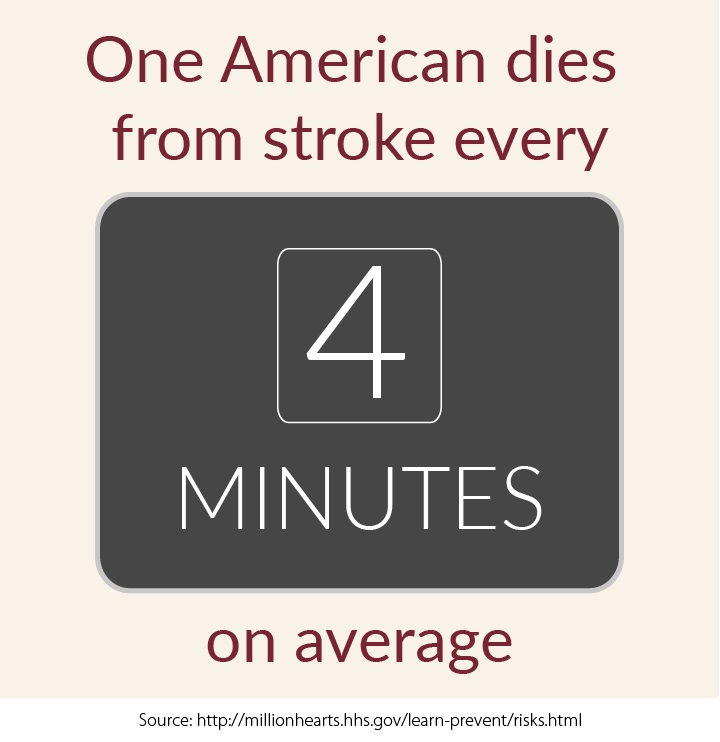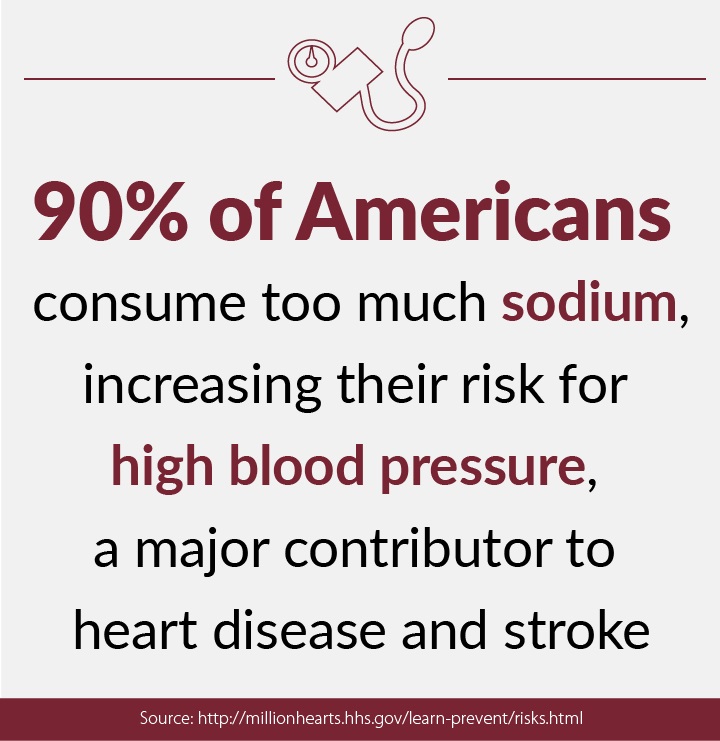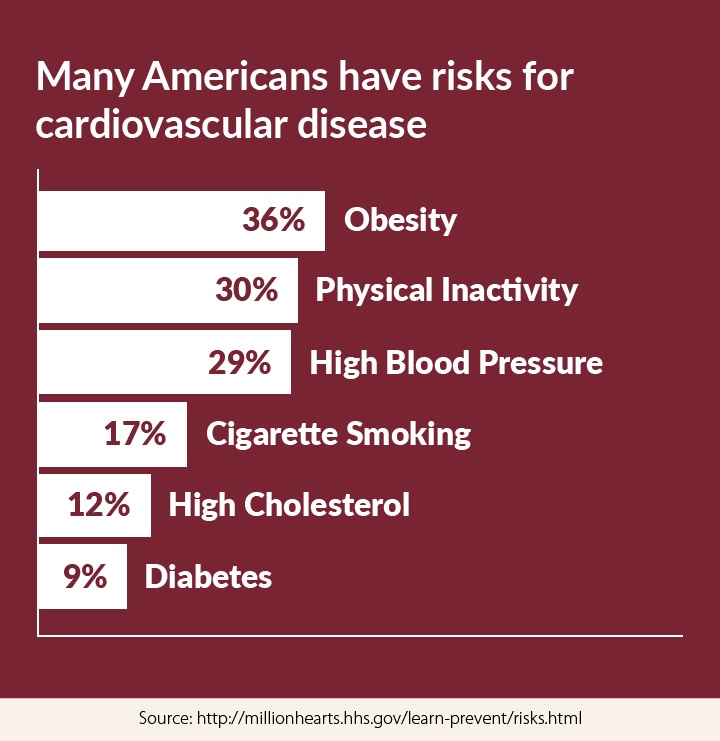Risks for Heart Disease and Stroke
About 1.5 million heart attacks and strokes happen every year in the United States. You can’t change some of your risks for heart disease and stroke, but you can manage many of your risks by following a healthy lifestyle.




References
Heart attacks in men and women (at ≥ 45 years of age):
Mozzafarian D, Benjamin EJ, Go AS, Arnett DK, Blaha MJ, Cushman M, et al. on behalf of the American Heart Association Statistics Committee and Stroke Statistics Subcommittee. Heart disease and stroke statistics—2016 update: a report from the American Heart Association. Circulation 2016;133:e38–360.
Stroke:
Mozzafarian D, Benjamin EJ, Go AS, Arnett DK, Blaha MJ, Cushman M, et al. on behalf of the American Heart Association Statistics Committee and Stroke Statistics Subcommittee. Heart disease and stroke statistics—2016 update: a report from the American Heart Association. Circulation 2016;133:e38–360.
High Blood Pressure:
Cogswell ME, Zhang Z, Carriquiry AL, Gunn JP, Kuklina EV, Saydah SH, et al. Sodium and potassium intakes among US adults: NHANES 2003–2008. Am J Clin Nutr 2012;96:647–57.
Cardiovascular disease risks:
Physical Inactivity: (percentage of American adults who engaged in no leisure time physical activity in 2014; estimates for other years and by demographics are available on the Healthy People 2030 website) CDC. Physical activity: Adults engaging in no leisure-time physical activity (age adjusted, percent, 18+ years). Retrieved from https://odphp.health.gov/healthypeople/objectives-and-data on April 22, 2025.
Obesity: Ogden CL, Carroll MD, Fryar CD, Flegal KM. Prevalence of obesity among adults and youth: United States, 2011–2014. NCHS data brief no. 219. Hyattsville (MD): National Center for Health Statistics; 2015.
High Cholesterol (≥240 mg/dL) Among Adults Aged 20 and Older: Carroll MD, Fryar CD, Kit BK. Total and high-density lipoprotein cholesterol in adults: United States, 2011–2014. NCHS data brief no. 226. Hyattsville (MD): National Center for Health Statistics; 2015.
High Blood Pressure: Yoon SS, Fryar CD, Carroll MD. Hypertension prevalence and control among adults: United States, 2011–2014. NCHS data brief no. 220. Hyattsville (MD): National Center for Health Statistics; 2015.
Cigarette Smoking: Jamal A, Homa DH, O’Connor E, Babb SD, Caraballo RS, Singh T, et al. Current cigarette smoking among adults—United States, 2005–2014. MMWR 2015;64(44):1233–40.
Key Facts
Many risks for heart disease and stroke—including high blood pressure and high cholesterol—may not have any symptoms. Many of these risks—specifically high blood pressure, high cholesterol, smoking, and obesity—are preventable and controllable. Controlling these risks could reduce your risk for heart attack or stroke by more than 80%.
- About 160,000 people who died from cardiovascular disease in 2014 were younger than age 65.
- Heart disease is the leading cause of death for all adults in the United States. Some minority groups are more likely to be affected than others: African Americans have the highest rate of high blood pressure of all population groups, and they tend to develop it earlier in life than others.
- Stroke is the fifth leading cause of death for U.S. adults, but the risk of having a stroke varies. Compared to whites, African Americans are nearly twice as likely to have a first stroke. Hispanic Americans’ risk falls between the two. African Americans and Hispanics are more likely to die following a stroke than are whites.
- Individuals with low incomes are much more likely to suffer from high blood pressure, high cholesterol, heart attack, and stroke than their high-income peers.
- The country’s highest death rates due to stroke are in the southeastern United States.
More Information
Learn more from the Centers for Disease Control and Prevention:
